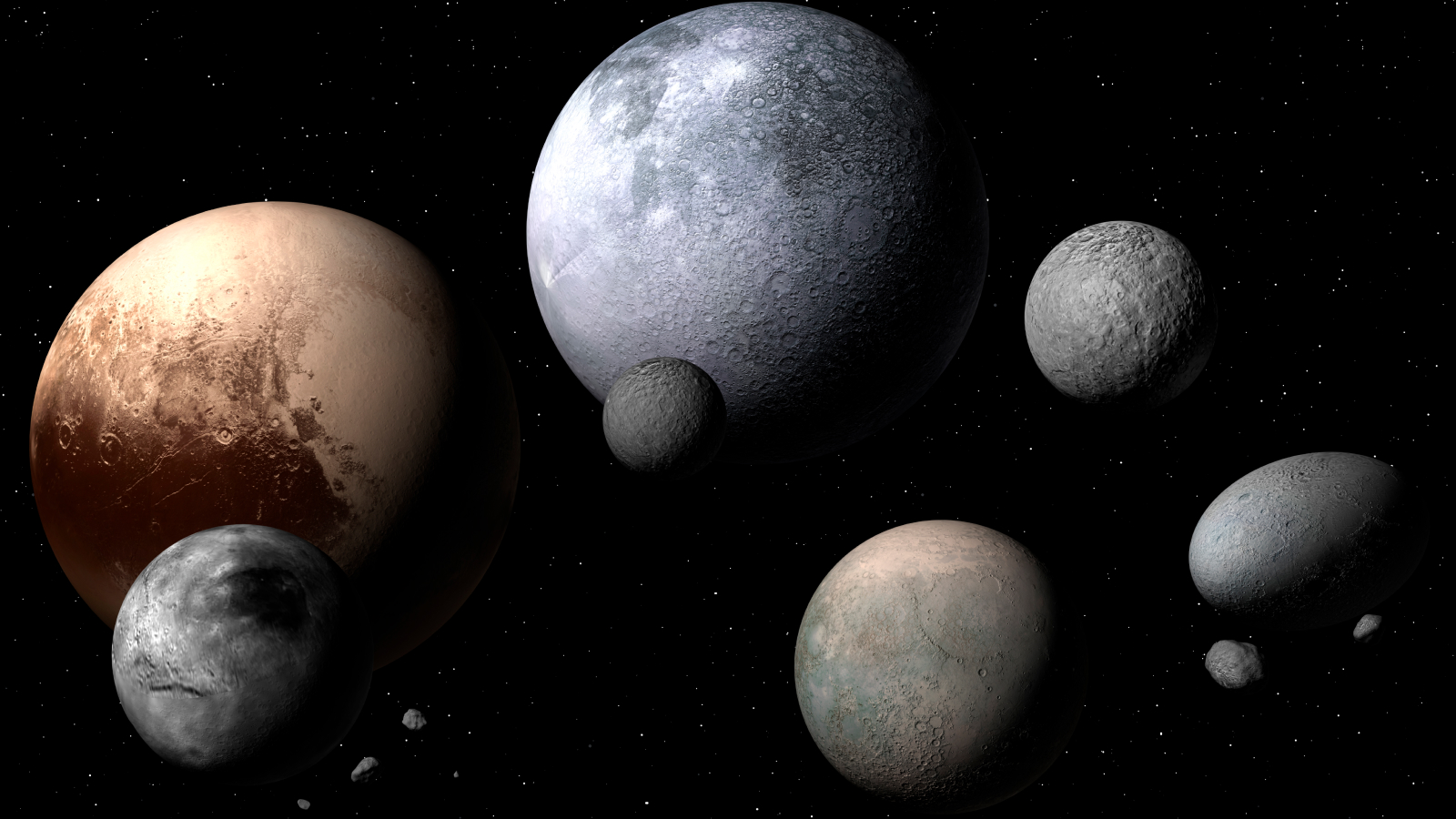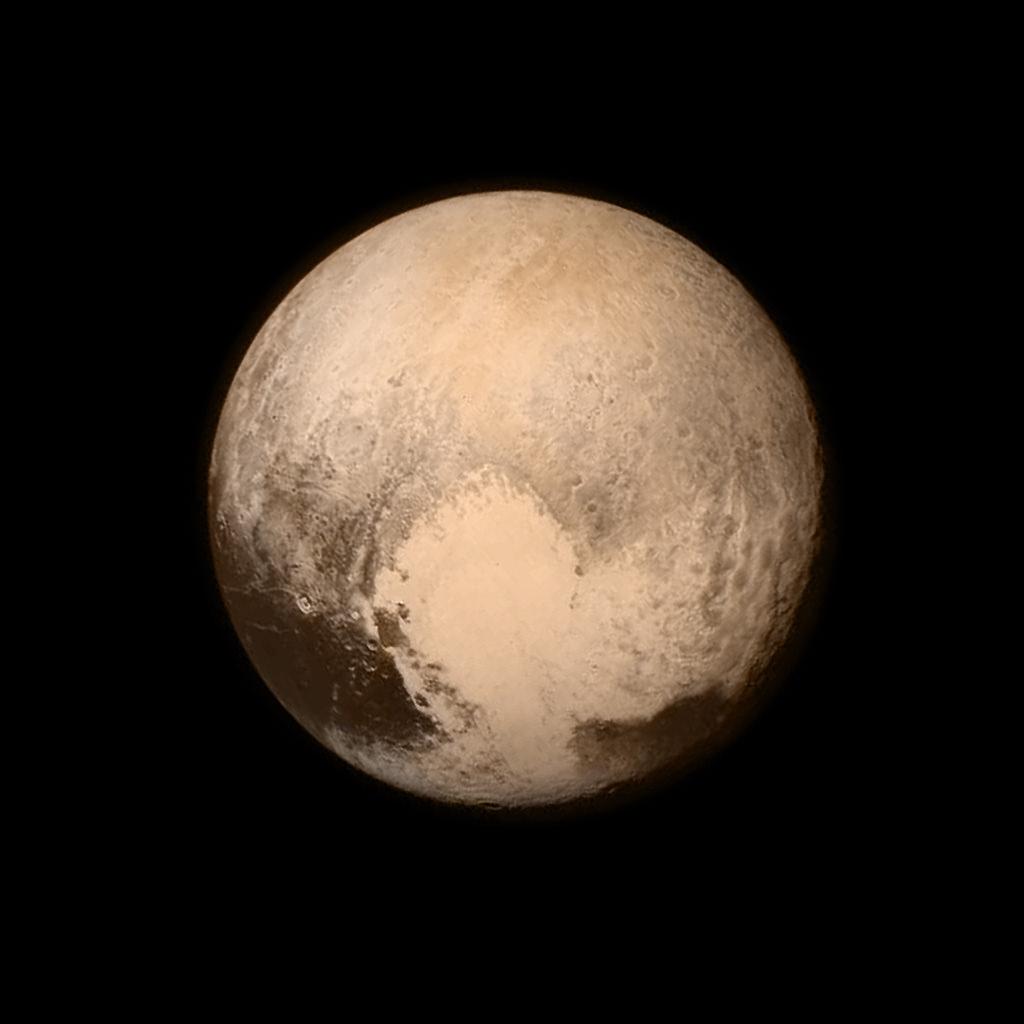What are dwarf planets — and how many are there?
How many dwarf planets are there in our solar system? The recent discovery of 2017 OF201 makes the tally anywhere between five and 18, plus hundreds of potentially undiscovered ones, depending on whom you ask.

In 2006, Pluto was famously demoted from a planet to a dwarf planet. It remains the most famous dwarf planet today, but there are others in our solar system, including potentially hundreds that haven't been discovered yet.
But what, exactly, is a dwarf planet? And how many dwarf planets are there?
A dwarf planet is a celestial body that is smaller than a planet but bigger than an asteroid or other small rock in the solar system. They’re not planets because they only meet two of the three criteria for something in space to be considered a true planet.
A planet is defined by three qualities: It orbits the sun, it's mostly round, and it's massive enough for its gravity to have mostly kicked large objects from its orbit. Pluto and some other known dwarf planets meet the first two criteria but not the third because they orbit in the Kuiper Belt, a region beyond Neptune filled with small icy debris.
When Pluto was first discovered in 1930, it (and other similar objects in the Kuiper Belt) were so far away and faint that they were really hard to spot, even with the most powerful telescopes at the time. Indeed, the very qualities that make something a dwarf planet make those objects particularly hard to detect.
"There are a few things that work against us spotting them," Mathew Yu, an astronomer at UCLA, told Live Science in an email. "They are far away from the sun. The reflected light from them is faint as a result. Some have low reflectivity, making light reflecting off them fainter."
Get the world’s most fascinating discoveries delivered straight to your inbox.
Plus, "they move slowly across the sky due to their large distance from the sun," he added. "They go around the sun once every hundreds of Earth years. So their relative motions to the background stars are small. For astronomers with a limited observing time, these objects become hard to detect."
Astronomers got a lot better at finding objects in the Kuiper Belt in the 1990s and 2000s as telescope technology improved. And once they could see a bit better, they noticed there were a lot more rocks out there with orbits similar to Pluto's. Between 2002 and 2005, astronomers found seven more particularly large rocks: Haumea, Makemake, Quaoar, Sedna, Orcus, Eris and Salacia.
The International Astronomical Union (IAU) — the group of astronomers that decides on official names and terms for things in space — decided in 2006 that a new category was needed to describe these objects that were pretty big but not big enough to clear their orbits as a true planet does. Thus, the name "dwarf planet" was born.

How many dwarf planets are there?
With eight named large rocks in the Kuiper Belt, you might think that means there are eight dwarf planets. However, not all astronomers agree on the number.
"Accepted numbers range between around 10 to a few hundred in the Kuiper Belt alone," Yu said. "Some estimate that there may be up to tens of thousands of them beyond the Kuiper Belt."
The IAU has officially recognized only five dwarf planets: Pluto, Haumea, Makemake and Eris in the Kuiper Belt, plus Ceres in the asteroid belt. We've sent space probes to only two of these: Pluto (visited by NASA's New Horizons) and Ceres (visited by NASA's Dawn), both of which flew by those bodies in 2015.
Astronomers who observe dwarf planets, however, tend to recognize nine: the previous five, plus Quaoar, Sedna, Orcus and Gonggong. Gonggong was discovered in 2007 after the dwarf planet name change, but it wasn't confirmed until some new observations from NASA telescopes in 2016. The IAU is still considering proposals on these dwarfish bodies.
There are at least a handful more objects that have been proposed but need more observations to confirm their size and, therefore, dwarf planet status.
And in June 2025, scientists proposed a new possible dwarf planet: 2017 OF201. Astronomers found this particularly faint object by searching through an old pile of data with new advanced algorithms.
If you count all of the currently proposed dwarf planets plus the newcomer, that makes eighteen or more dwarf planets in the solar system — and that's just the ones we've seen. There are likely more out there, perhaps even hundreds or thousands, someday to be revealed as our telescopes keep getting better.

Briley Lewis (she/her) is a freelance science writer and Ph.D. Candidate/NSF Fellow at the University of California, Los Angeles studying Astronomy & Astrophysics. Follow her on Twitter @briles_34 or visit her website www.briley-lewis.com.
You must confirm your public display name before commenting
Please logout and then login again, you will then be prompted to enter your display name.


